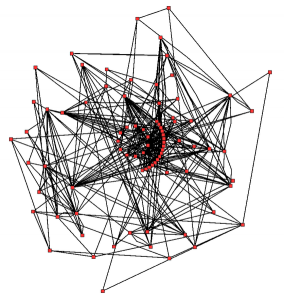MONDAY, 9 AUGUST 2010
Genome sequences alone apparently don't say much. While the Human Genome Project revealed the order of letters that make up the genetic code, we still do not understand how that code gets translated into the complex behaviors and traits that make us each functioning, unique human being. Scientists have tackled the challenge of mapping genome sequence (genotype) to observable properties (phenotype) by studying how changing an individual gene affects the phenotype of interest. This approach is limited, however, because of a phenomenon called epistasis: different genes can interact in unpredictable and complicated ways such that the effects of gene A may vary depending on the state of gene B.In a study recently published in the journal Chaos, Marcin Imielinski and Calin Belta addressed the challenge of understanding the epistasis in human metabolic networks, one of the most important and complex biological networks [1]. Each cell in the human body must perform a complicated series of reactions to extract energy and construct essential building blocks. Scientists have long known that there are numerous pathways and enzymes involved in performing these tasks, but the complexity of the relationships between different metabolic pathways makes it hard to know how genetic differences affect these different reactions. In their study, Imielinski and Belta addressed this challenge by developing a mathematical construct to represent epistasis in cellular metabolism. Using the concept of a minimal cut set, that is, a set of reactions that together are necessary for a phenotype but individually are not, Imielinski and Belta revealed that many human metabolic pathways act in parallel with each other. This parallelism leads to what Imielinski and Belta call 'deep epistasis', by which individual metabolic pathways can buffer each other and thereby minimize the effects of individual genes.
In addition to providing a framework for analyzing the relationship between genetic variation and metabolic disease, this analysis is important for what it reveals about specific metabolic pathways. In particular, this analysis may be of use for cancer researchers. In the last decade, scientists have begun to pay more attention to the observation that cancer cells display a different metabolism than normal cells. This observation is exciting because it may not only help us better understand cancer, it may also help identify important and novel drug targets. Imielinski and Belta's analysis may help direct researchers toward genes whose suppression might inhibit pathways important to the growth and survival of cancer cells.
Written by Natalie Vokes

